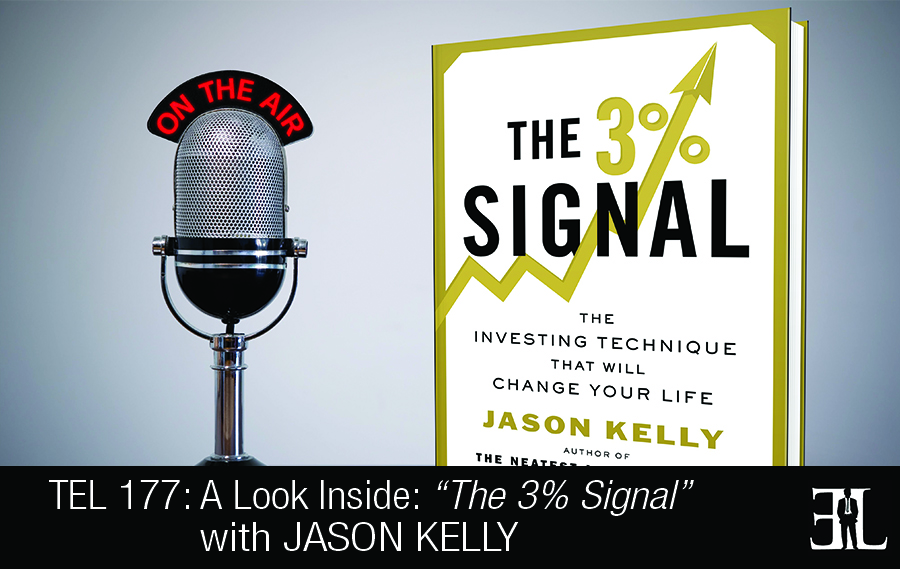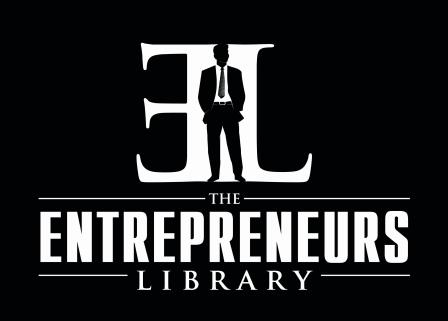A Preview of The 3% Signal with Jason Kelly

A summary of things you should know about The 3% Signal according to Jason Kelly:
Introduction
In this episode Jason Kelly shares all the insights on his book, The 3% Signal, where he reveals a revolutionary investing strategy that will change your life.
In his book Kelly takes the stress out of investing by providing a simple formula that can be added to any type of financial account in order to help novice investors level the playing field. The goal of the book is to help you ensure a secure retirement plan, react intelligently to price changes, learn how to buy low and sell high, and understand the basic language that is utilized in the investing industry.
This book is perfect for entrepreneurs that are interested in increasing their personal wealth and are looking for a simple beginners guide into the world of financial investments.
The Book’s Unique Quality (5:34)
It’s not a book that is trying to show you how to be smarter than everybody else. This system is based on history, based on a simple timeframe and it’s something somebody can manage with just 15 minutes of effort per quarter using only prices alone.
The Best Way To Engage (7:22)
Reading the book front to back is the best way to go.
The Reader’s Takeaway (21:13)
It’s that prices are all that matter. Ideas count for nothing and opinions are distractions. The only thing that matters is the price of an investment whether it’s below a level indicating a good time to buy or above a level indicating a good time to sell. We can know that level and this is a system that tells us.
A Deep Dive Into The Book (9:23)
The first chapter is called Why Markets Baffle Us and this is where I introduce a concept that comes throughout the book called Zero Validity Environment. This chapter looks at why it’s so hard for us to get financial markets right.
At the end of each chapter in the book I include an executive summary to review the key parts of the chapter the reader should obtain.
The next chapter is called Harnessing Fluctuation. Flat lines are not conducive to profit, we need rises and we need falls, and we need to use them intelligently. If we can’t predict them what can we do instead? All we want from a growth fund in our account is 3% per quarter and that’s what this chapter lays out.
Chapter three is titled Setting A Performance Goal and this shows the background on why I go with 3%. The reason it turns out to be a sweet spot is that annually it turns into 12.6% per year which is 26% more than the stock markets average 10% per year over the last 90 years or so.
Chapter four is titled What Investments to Use and this is where you find out why small companies are best for the growth side. This chapter also looks at why bonds are best to use for safety.
Chapter five is Managing Money in the Plan and this goes over some brass tacks of how to handle regular contributions to your funds.
Chapter six is called The Plan in Action and this looks at more brass tacks things such as what time of account you have, what types of funds are in there, and how to find the right ones.
The last chapter is called The Life of the Plan and this is where it all comes together in a look at three investors. These three investors are fictional people working at a fictional company but it’s a real life scenario that takes all three of them with identical incomes and 401k plans through a 50 quarter time period (12 and ½ years).
NOTE: That was just a summary. To get the full deep dive, play the audio clip at 09:23
Notable Quotes From The Book (21:45)
“The stock market is humanities money mind writ large. For many there is no greater distraction from life than the new cycle connected to financial markets. The more enlightened way to navigate the market is by letting it all go, reducing the chaos to a concise list of prices, visiting that list just four times a year, letting an unemotional formula tell you what the prices mean you should do, and then doing it. This higher state of investing not only performs better; it costs less and uses less of your limited time on earth.” – Jason Kelly
The Credibility/Inspiration Of The Author (0:56)
I started out writing for IBM at the Silicon Valley laboratory in San Jose California right out of college. I learned there to write about complex topics and I had a great editor there who really focused on surprising readers. Four years after working there I finally had enough income after writing books on my own about the stock market to leave IBM and become a fulltime freelance writer. So for the past two decades I have been writing about the stock market. I moved to Japan 13 years ago after being here on a book tour and falling in love with the place.
The inspiration was noticing friends and family that had been struggling with the stock market for years. Over the years for writing for people and helping them with their investments I came to realize that almost everything in the stock market is geared against the individual investor. This is hard for professional investors to get right much less the part-time investor. I wanted to give people a system that does work that doesn’t require any input from the media, beats the market in almost all pros over time, and is simple enough that anybody can do it. It’s the product of two decades of research and is the best practice I’ve been able to come up with.
Other Books Recommended By The Author (23:03)
The Interpretation of Dreams by Sigmund Freud
More Information About This Book and The Author
Buy The 3% Signal by Jason Kelly on Amazon today
Visit JasonKelly.com to learn more about Jason and his book
Follow Jason Kelly on Facebook and Twitter
More Information About This Episode
Download the full transcript here (coming soon)
Listen on iTunes, Stitcher , and SoundCloud
Related books:
Buy, Hold, and Sell! by Ken Moraif
The Millionaire Fastlane by MJ DeMarco
Get What’s Yours by Larry Kotlikoff
Relevant advice and tips:
5 Personal Wealth Management Tips For Financial Stability
What did you like and not like about this episode? Fill out this one minute survey here.
 The Entrepreneurs Library
The Entrepreneurs Library














